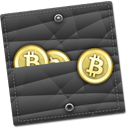Getting Started
Before you start mining Bitcoin, it's useful to understand what
mining really means. Mining is the process of running SHA256 double
round hash verification processes in order to validate transactions and
provide the requisite security for the public ledger of the bitcoin
network. The speed at which you mine is measured in hashes per second.
The bitcoin network compensates miners for their effort by releasing
bitcoin to those who contribute the needed computational power. This
comes in the form of both newly issued coin and from the transaction
fees included in the transactions you validate when mining. The more
computing power you contribute, the greater your share of the reward.
Step 1 - Get Hardware
Purchasing Bitcoins - Although it's not yet easy to buy bitcoins, it's getting simpler every day. Here are our recommendations:
To begin mining, you'll need to aquire bitcoin mining hardware. In
the early days of bitcoin, it was possible to mine with your computer
CPU or high speed video processor card. Today that's no longer possible.
Devices based on custom ASIC
chips
who's performance offers up to 100x the capability of older systems
have come to dominate the industry. Mining with anything less will
consume more in electricity than you're likely to earn. It's essential
to mine with purpose built bitcoin mining hardware. Several companies
such as
Butterfly Labs or Avalon offer excellent systems built specifically for bitcoin mining.
To learn more about bitcoin mining hardware, see our
hardware page or compare available systems at Bitcoinx's bitcoin hardware
comparison page.
Step 2 - Download Free Software
Once you've received your bitcoin mining hardware, you'll need to
download a special program used for mining. There are many programs out
there that can be used for Bitcoin mining, but the two most popular are
CGminer and BFGminer which are command line programs. If you prefer the
ease of use that comes with a GUI, you might want to try
EasyMiner which is a click and go windows/Linux/Android program.
For more detailed information on bitcoin mining software, click
here.
Step 3 - Join a Mining Pool
Once you're ready to mine, we recommend joining a mining pool like
eclipsemc
or eligius. Mining pools are groups of miners working together to solve
a block and share in it's rewards. Without a mining pool, you might
mine for over a year and never earn any bitcoins. It's far more
convenient to share the work and split the reward with a much larger
group of miners.
For a full list comparing all mining pools, go
here.
Step 4 - Set Up Wallet
The next step to mining is to set up a Bitcoin wallet or use your
existing Bitcoin wallet to receive the Bitcoins you mine. A Bitcoin
wallet is like a traditional wallet and can be software, mobile,
web-based.
Bitcoin hardware wallets
are also available. Bitcoins are sent to your wallet by using a unique
address that only belongs to you. The most important step in setting up
your wallet is securing it from potential threats by enabling two-factor
authentication or keeping it on an offline computer that doesn't have
access to the Internet. Wallets can be obtained by downloading a
software client to your computer.
For help in choosing a wallet, go
here.



 Bitminter client:
Hit the start button to start Bitminter client. You get bitcoins for
the work it does. Works on Windows, Linux and Mac. Requires updated Java.
Bitminter client:
Hit the start button to start Bitminter client. You get bitcoins for
the work it does. Works on Windows, Linux and Mac. Requires updated Java.
 Your work is recorded in shifts.
When we create a new block you get a share of the income
proportional to how much of the work in the last 10
completed shifts is yours. This reward system is known
as PPLNS with shifts.
There is a 1% fee on mining income.
Additional donations are optional but will unlock
various perks.
Your work is recorded in shifts.
When we create a new block you get a share of the income
proportional to how much of the work in the last 10
completed shifts is yours. This reward system is known
as PPLNS with shifts.
There is a 1% fee on mining income.
Additional donations are optional but will unlock
various perks.